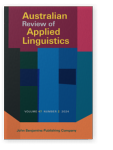Vol. 47:2 (2024) ► pp.219–246
Emotions of Japanese language learners in and out of class
There is growing recognition of the need to investigate second/foreign language learners’ emotions related to their language learning, because both positive and negative emotions affect a learner’s motivation and performance. However, research has not sufficiently explored the emotions of learners of languages other than English and other European languages, nor the emotions associated with learning experiences outside of the language class. The present research examines the emotions of 12 intermediate-level learners of Japanese and the causes of their emotions over 13 weeks, both in and out of class. Rates of positive emotions were higher outside the class than in lessons. The most frequent cause of the positive and negative emotions related to students’ L2 identity. The findings are discussed in relation to the language learning context of the university. The study suggests that learners’ emotions are closely associated with their learning contexts, including the content of lessons, and that more studies about learner emotions in different contexts are necessary, especially outside of language classes.
Article outline
- 1.Introduction
- 2.Learners’ emotions in second/foreign language learning
- 3.Aim and scope
- 4.Methods
- 4.1Context and participants
- 4.2Data collection methods
- 4.3Ethics
- 4.4Data analysis
- 5.Results
- 5.1Categories of positive and negative emotions
- 5.2Number of positive and negative emotions overall
- 5.3Number of instances of each positive and negative emotion
- 5.4Categories of causes of positive and negative emotions
- 5.5Number of instances of each cause of positive and negative emotions
- 6.Discussion
- 7.Implications
- 8.Conclusion
- Acknowledgemets
-
References
